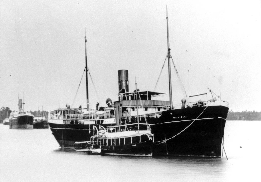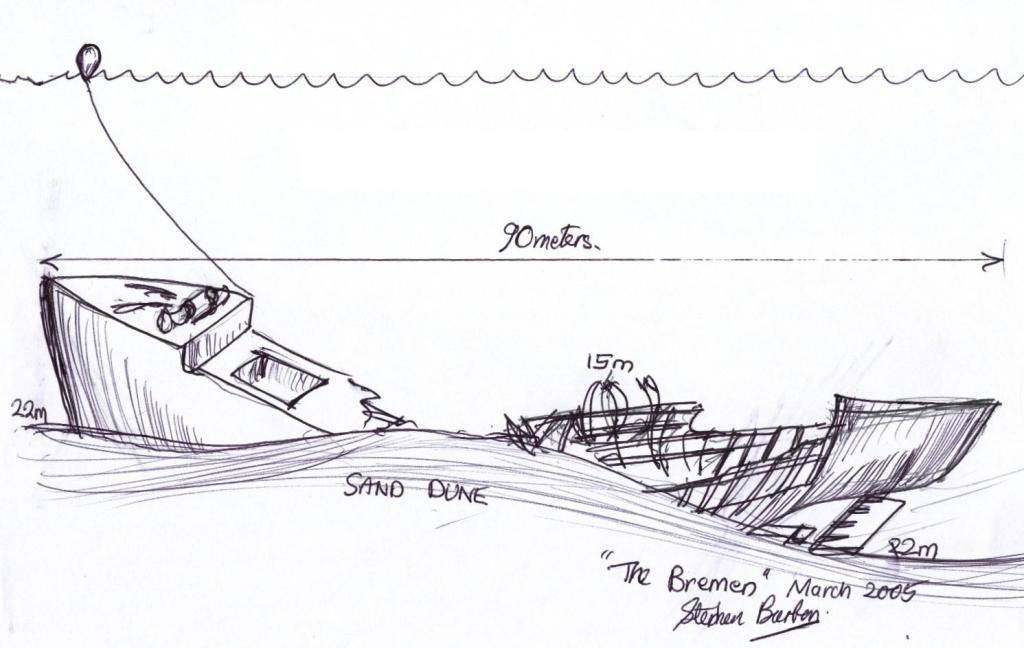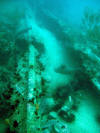The Petchaburi Bremen
Also known as the Siamese Steamship Co Vessel ‘Kaeo Samud’
Dive photos, information 2005 by Stephen Burton
All historical museum, shipyard & newpaper research © Jørn Albjerg 2018
Depth 22meters ;Suitable for air, nitrox, tecnical diving
SS Petchaburi / Kaeo Samud
(German Maritime Museum (Deutsches Schifffahrtsmuseum(DSM)) in Bremerhafen)
| Steamship P E T C H A B U R I | |
| New name | s.s. KAEO SAMUD |
| Intern. Call sign | Q H J T |
Shipyard |
Georg Seebeck AG, Bremerhaven, Germany |
| Yard number | 173 |
| Tonnage | 2191 gross tonnage |
| Length | 88,5 m |
| Breadth | 11,9 m |
| Draught | 7,3 m |
| Engine | Triple expansion steam engine |
| Power | 1150 Hp |
| Speed | 12,5 nm/h |
| Crew | 34 |
| 24.09.1901 | Launching under the name PETCHABURI for the company Norddeutscher Lloyd – North German Lloyd in Bremen |
| 28.10.1901 | Delivery to the North German Lloyd |
| August 1914 | At the beginning of World War I the PETCHABURI was interned in Bangkok. |
| 22 or 27.07.1917 | Confiscated by the Siam Government, re-named Kaeo Samud |
| 27.12.1920 |
On a voyage from Bangkok to Swatow (now Shantou) with rice on board she ran ashore near Sattahip in the Gulf of Siam (Ko Kram Yai )and sank. |
New Information greatfully received from Jørn Albjerg 2018
when I began to dive this wreck I heard a lot of stories and reasons as to how, what when and where.
In early 2000 I decided to look into this wreck and with the web developed, I suddenly had some opportunities to do so and the most of all, the time. It is rather time consuming.
Here is a little background;
I dove the Petchaburi a number of times (27 according to my dive log) between the late 70s and early 80s.
William “Bill” Stevens who used to have a dive shop on the North Pattaya beach taught me to dive. (PADI Open Water)
Bill was an ex US Army Special Forces diver.
I also dove a lot with Arthur B. Rhodes aka Dusty, pioneer of recreational diving in Thailand and Southeast Asia; NAUI instructor trainer. (Dusty passed away 2013 age 88)
and last but not least with William Jerry Welch, a retired US Airforce colonel and veterinarian. When I met Doc, he had logged 4000 dives in the Sattahip area. When our ways parted 5 years later, he had logged an additional 1000 dives. I was certified by Doc for Advanced Open Water certification.
(Doc Welch passed away 17 December 2004 age 77)
I have also been diving a lot with Ib Ottesen who used to own the Mermaid Dive Shop
I tried to find out more about the Petchaburi for many years and thanks to the modern world of the www I finally managed to get a little information. In 2003, I contacted the German Shipping Museum (Deutsches Schifffahrtsmuseum) in Bremerhaven, Germany. I knew from artefacts found on the vessel that the vessel had been built for the North German Lloyd, which later became part of the Hapag-Lloyd AG group.
The German Shipping Museum provided me with a photo and a short technical description – the picture that can now be seen on most of the web pages.
Extracts from The Straits Times, 5 January 1921, Page 10
The Bangkok Times of December 31, 1920 stated that the Kaeo Samud left Kohsichang (Ko Sichang) at 11 a.m. on Monday (27th ) outward bound for Swatow. At 3 p.m. she struck on an unchartered rock. The chart showed 14 fanthoms (25,6 meter) of water and the ship herself was heavily laden, drawing 20 feet 9 inches (6,30 m). She struck on the port side. And made water so fast that the captain decided the only possible thing was try to and beach the ship, but in this he was unsuccessful and the vessel sank practically on an even keel, in ten fathoms og water at 3 p.m. It was impossible to beach the vessel at Koh Ira (Koh I Ra) nearby, that being a rocky island with deep water. (see full newspaper article below)
(Actual wreck site is between Ko Khram and Laem Pu Chao on the mainland at Sattahip Bay.1)
In February 1921, a Naval Surveyor discovered the uncharted rock.
1 Text in brackets by J. Albjerg
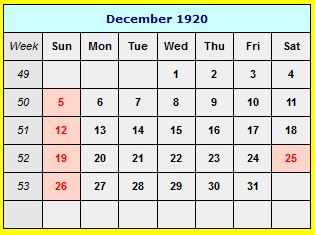
JAL comments;
I dove the PETCHABURI / KAEO SAMUD mostly with Al Mavro and Doc Welch (William Jerry Welch). On one dive with Doc, Sudy and Bogard on 30 May 1981 – we found an old steel box which we were able to open quite easily. In the box there were some newspapers all dated spring 1920 (April – May as far as I remember). We also found some accounts – in Thai, which Sudy could translate – for food for the watchmen on the vessel. (It’s amazing how ignorant I was on taking notes from the different dives. In one’s imagination, you thought you could remember these details ever after)
Sudy recovered a ceramics drinking water tank (very beautiful and intact) with an internal filter and a small brass valve.
I recovered some silver spoons, a small glass bowel, a ceramic spoon and a ships or marine log in solid brass(propeller) used for measuring the vessels speed through the water. Uunfortunately I did not find the indicator.

When we dove some of the side plates had begun to fall off the ships side, which gave us the opportunity to search areas that could not be reached earlier.
The Petchaburi was probably like many other smaller vessels at the time equipped with facilities to accommodate a smaller number of passengers who travelled along the coast. Many cargo ships built until recent years, where pure container ships appeared, could accommodate a small number of passengers.
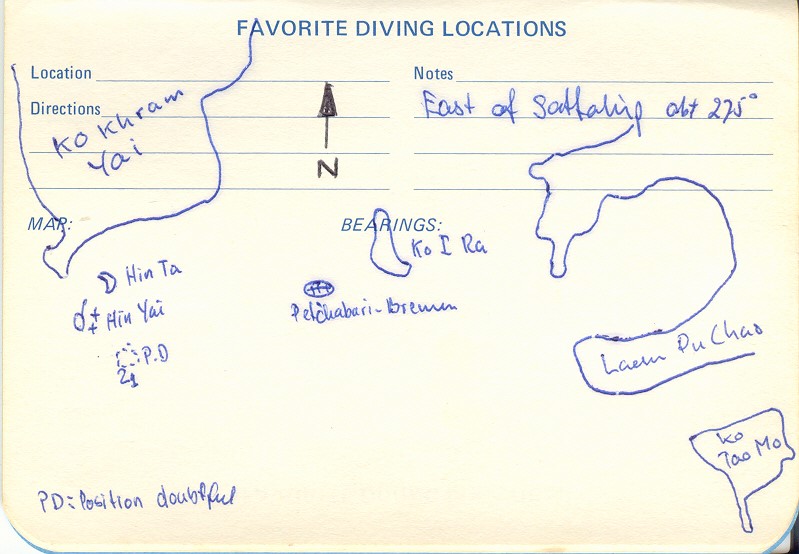
My dive log sketch(above)
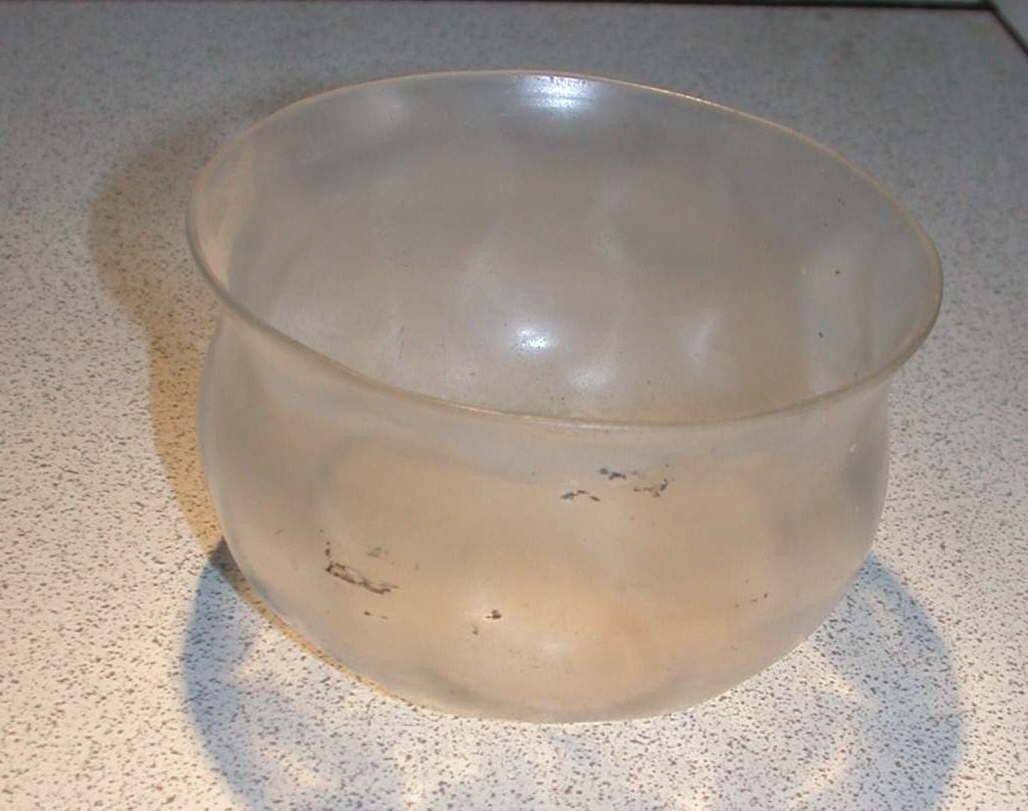
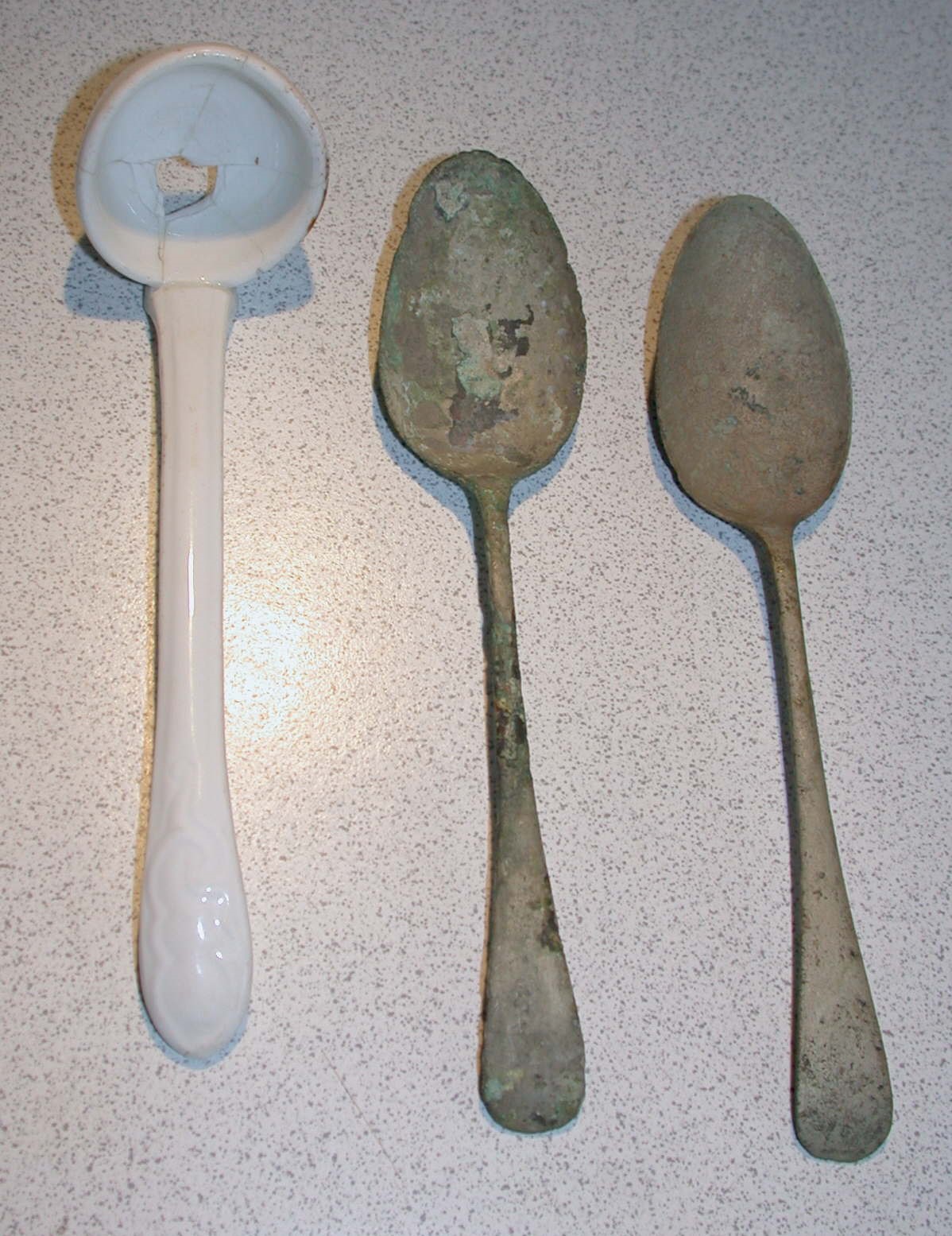
Two silver spoon and a porcelain ladle (unfortunately broken by our cat)
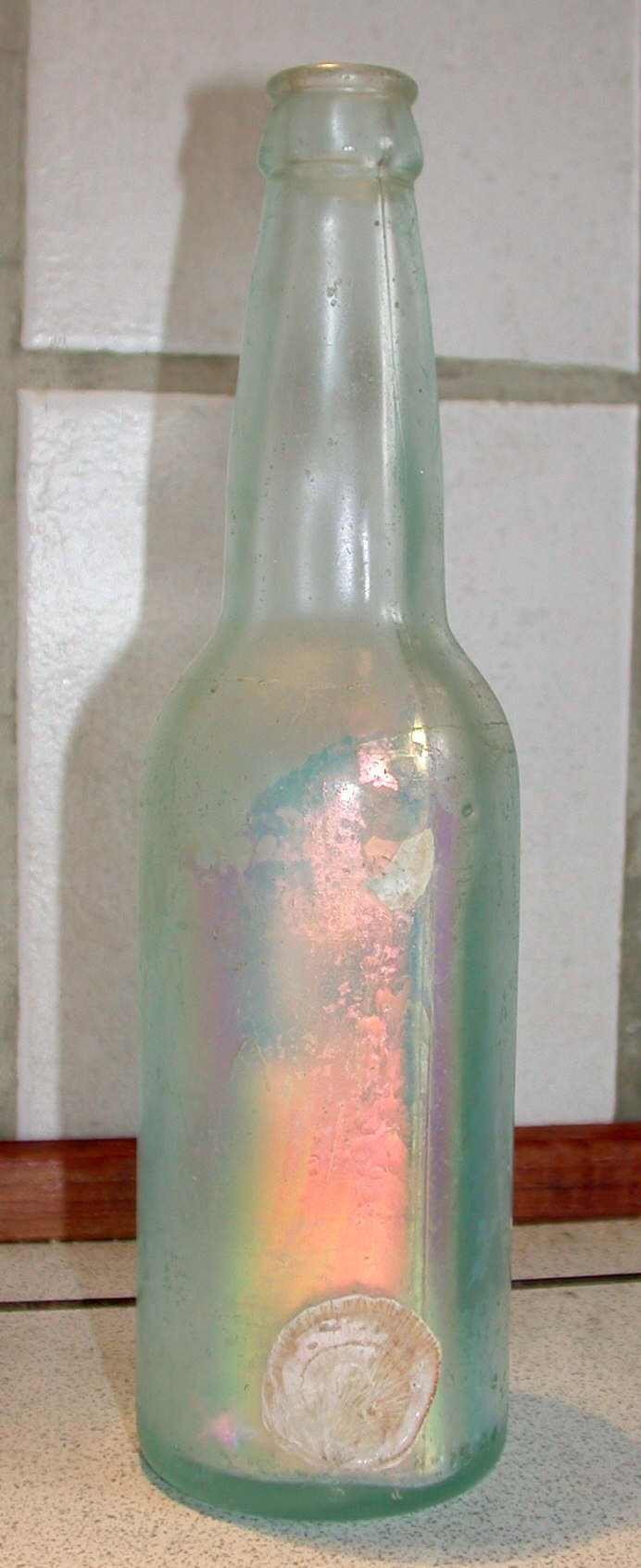

Codd-neck bottle from Singapore Hot Springs Co. Ltd. – Singapore(photos above)
The Codd-neck bottle was designed and manufactured to enclose a marble and a rubber washer/gasket in the neck. The bottles are filled upside down, and pressure of the gas in the bottle forced the marble against the washer, sealing in the carbonation. The bottle was pinched into a special shape to provide a chamber into which the marble was pushed to open the bottle. This prevented the marble from blocking the neck as the drink was poured.
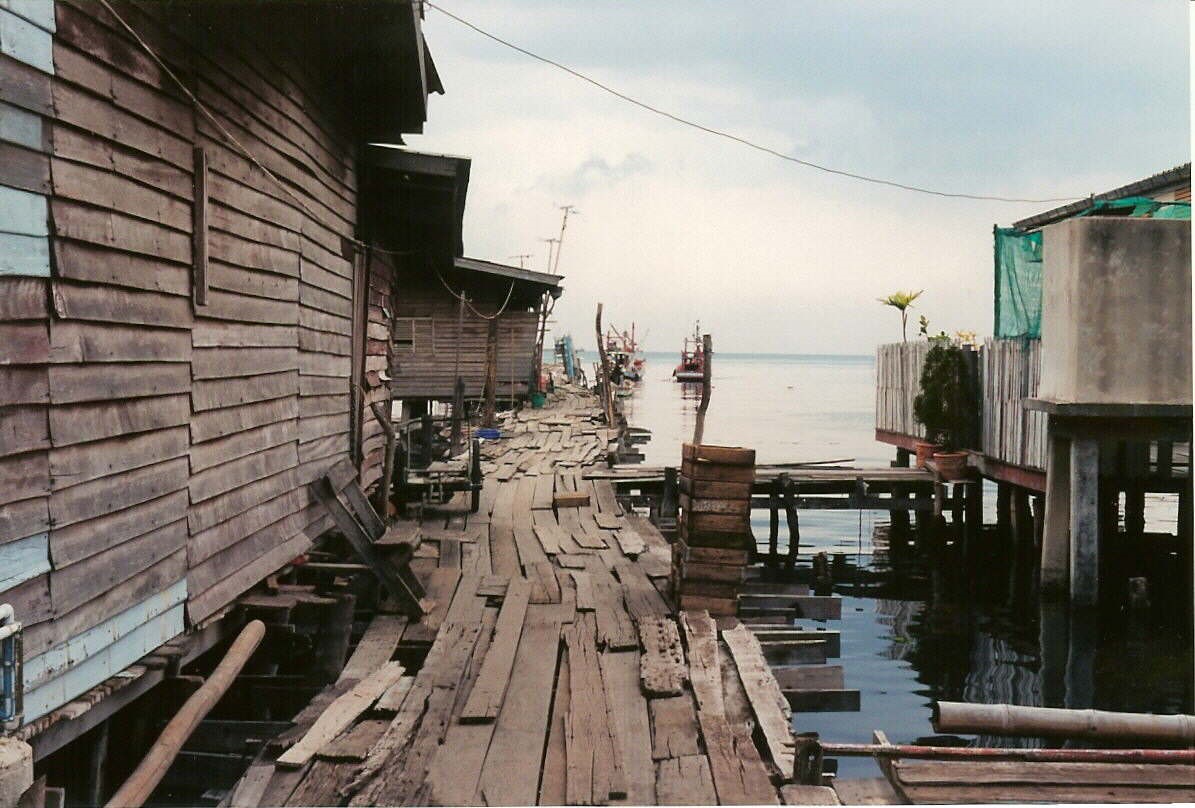
Sameasan pier 1977-2004

Doc Welch – The fish was shot at the stern of the s.s. Petchaburi

Chart showing wreck location.
KAEW SAMUD’S STRANDING.
The Straits Times, 5 January 1921, Page 10
http://eresources.nlb.gov.sg/newspapers/digitised/article/straitstimes19210105-1.2.88.aspx
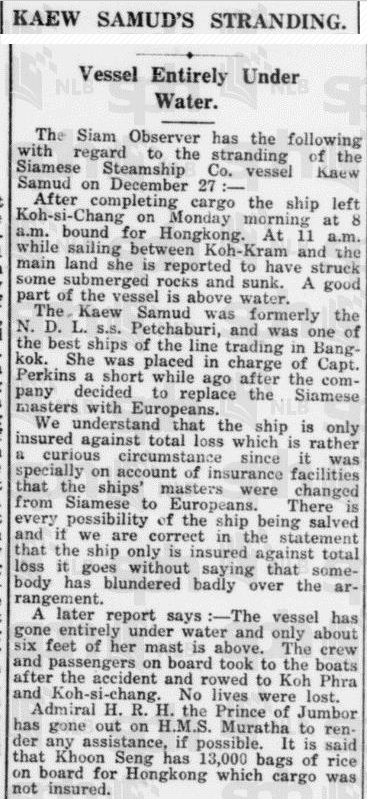
WRECK OF THE KAEO SAMUD.
The Straits Times, 10 January 1921, Page 11
http://eresources.nlb.gov.sg/newspapers/digitised/article/straitstimes19210110-1.2.84.aspx

The Straits Times, 20 January 1921, Page 6
http://eresources.nlb.gov.sg/newspapers/Digitised/Article/straitstimes19210120-1.2.39.aspx

Some sources on the internet/dive sites claim that;
“The vessel sank after a fire and explosion in the engine room”
Demolition practice inflicted on it by the Royal Thai Navy, who for many years used it for bombing practice.
http://diveneptunecom.nl.siteprotect.net/Wreck%20diving%20Pattaya%20Thailand.htm
the demolition practice inflicted on it by the Royal Thai Navy, who for many years used it for bombing practice.
JAL remarks; If this should be the case it must have taken place after 1982
http://very-scary-halloween.blogspot.com/2012/08/pattaya-offers-multiple-wrecks-for.html
She sank in 1920 after your ex steam engine boomed.
JAL remarks; No, it sank after hitting an uncharted rock.
JAL comments:
- “Fire and explosion in the engine room”
- The “fire” story is pure imaginations from and not substantiated any way, and is most likely constructed in order to create excitement and to attract customers.
Ref. The Bangkok Times of December 31.
It is stated that the Kaeo Samud left Kohsichang (Ko Sichang) at 11 a.m. on Monday outward bound for Swatow. AT 3 p.m., she struck on an unchartered rock.
What is essential here is “struck on an unchartered rock.” A rock not seen on the charts and therefor invisible to the Captain, so he could not take his precautions!
The ship’s captain decided the only possible thing to do was to beach the ship but he was unsuccessful. The ship sank within 30 minutes. The reason why it was not possible to beach the ship at nearby Koh Ira (Koh I Ra), that it was a rocky island surrounded by deep water. (The western side is rocky and the eastern side have sandy beaches)
It is also stated that “the Siamese officers in the engine room worked splendidly till they were forced to leave owing to the inrush of water”
JAL remarks; this would not be the case if there had been a fire in the engine room.
When I dove the wreck, I did not see any evidence to any fire.
In a steamship with solid fuel – coal – the risk of a fire is small. A little higher with liquid fuel – oil. However, this vessel was a coal-fired boiler. I saw the coal myself.
After almost 100 year at the seabed, there has been a lot of decomposition of the wreck. Even more now than in the 70s.
Additional info;
North German Lloyd Company / Nord-deutscher Lloyd
The North German Lloyd Line (NGL) was founded in 1857 by the amalgamation of four smaller companies. They commenced operations between Bremen and London with six 500 ton steamers. Transatlantic voyages to New York started in June, 1858; Baltimore in March, 1868; and in 1869 regular sailings commenced to New Orleans. A service to Central America was instituted in 1871, but was withdrawn in 1874. Voyages from Bremen to Brazil and the River Plate started in 1876 and Genoa to Brazil and River Plate in 1878, the latter service only lasting for three years.
By 1866 NGL was making weekly runs to New York and in 1874 averaged 11 days and 13 hours on its sailings. From 1882 onwards, the New Orleans service was extended to Galveston, but the whole route was abandoned in 1886. Two new routes from Bremen to the Far East and Bremen to Australia were opened in 1886, both via Suez. Italy to New York sailings commenced in October, 1891 and in 1897, the Bremen – UK service was sold to Argo Steamship Company together with seven ships. Occasional sailings between Bremen and Galveston resumed in 1898 and became regular in 1899.
A fortnightly service was started in 1893 by what they called their Roland Line. The Roland Line sailed from Bremen to New York with steerage passengers and cargo. By December of 1893 the line owned 80 vessels.
In 1904 a new service from Marseilles to Naples and Alexandria started and in 1909 a joint summer service between Bremen and Hamburg to Quebec and Montreal was instituted with Hamburg America, Red Star and Holland America Lines. Bremen – Galveston ships commenced calls at Philadelphia in March, 1910 and a new service started in 1913 to Boston and New Orleans.
At the outbreak of WWI, many NGL ships took refuge in US ports, and these were seized by American authorities in 1917. After the Armistice, the company lost every worthwhile ocean going steamer as war reparations, and in 1920 chartered ships from the US Shipping Board to resume services. They gradually rebuilt their fleet and in 1925 took over the Hamburg-Bremen Africa Line, the Dampschiff Reederei Horn and the Roland Line. In 1928 Quebec and Montreal services were resumed. During World War II, NGL again lost almost their entire fleet and again restarted with chartered ships. In 1970 the company amalgamated with Hamburg America Line to become HAPAG-Lloyd.
Many thanks to Ted Finch for his assistance in collecting this data. The following list was extracted from various sources. This is not an all inclusive list but should only be used as a guide. If you would like to know more about a vessel, visit the Ship Descriptions (onsite) or Immigrant Ship web site.
Funnel:
1858 Black
1881 Black, but express steamers Buff.
1889 Buff.
Documentation:
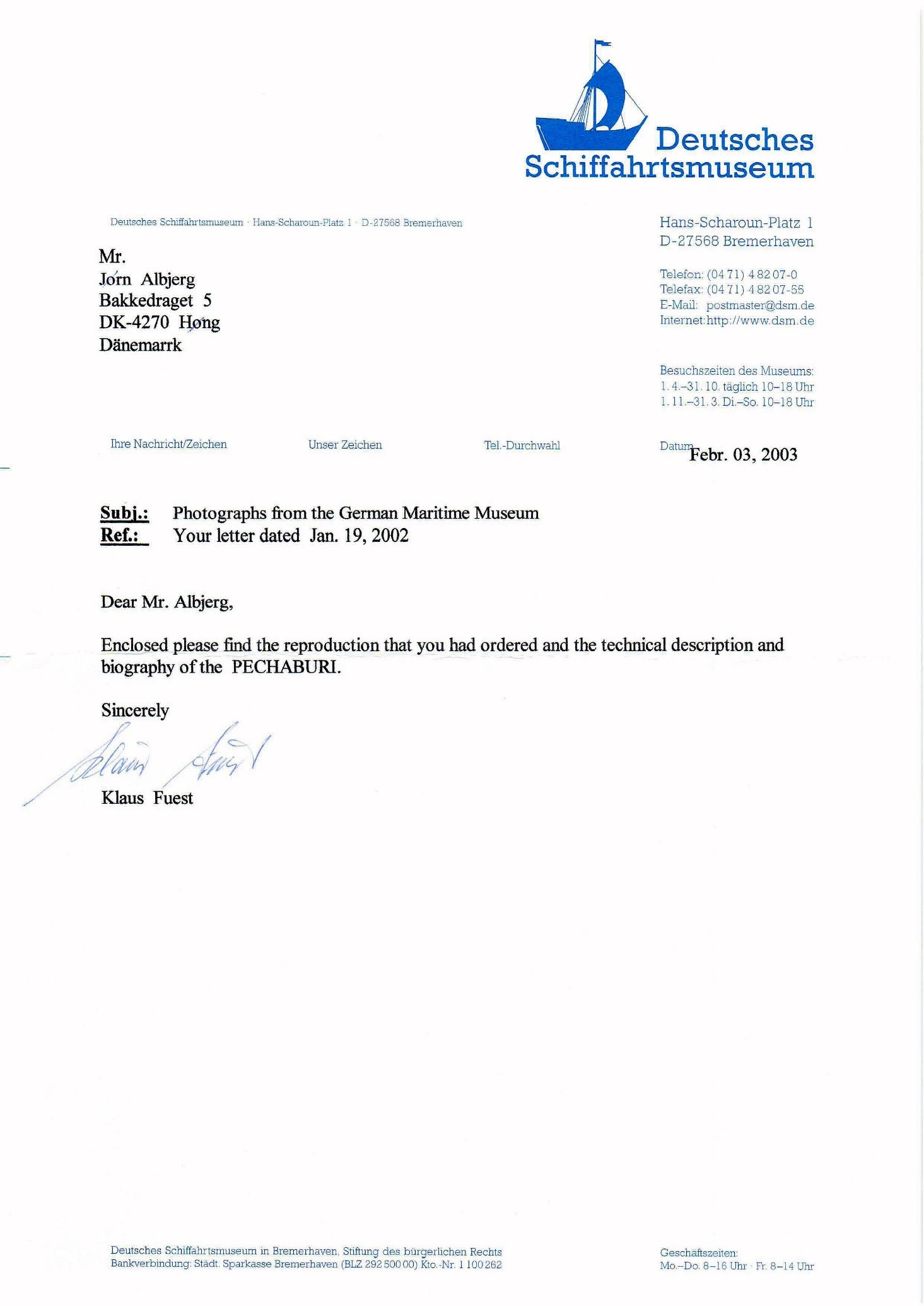
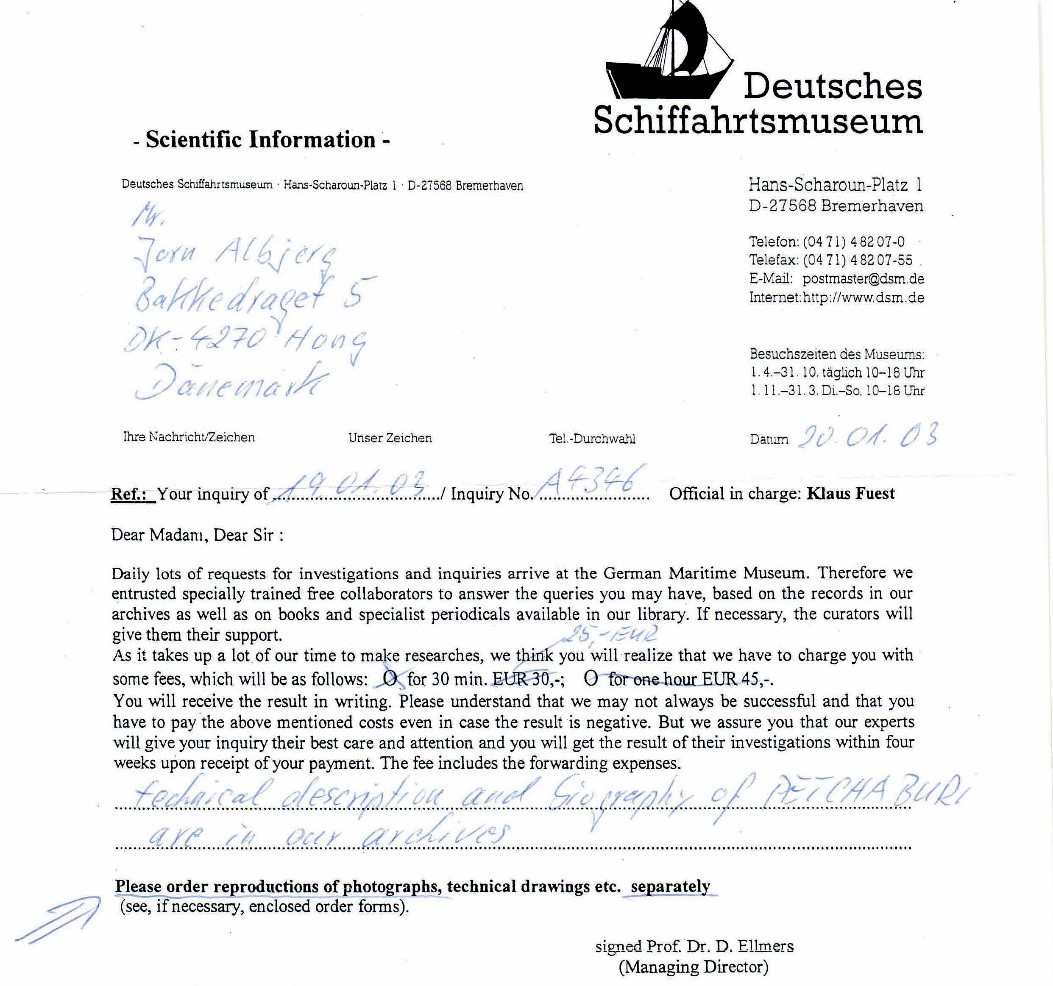

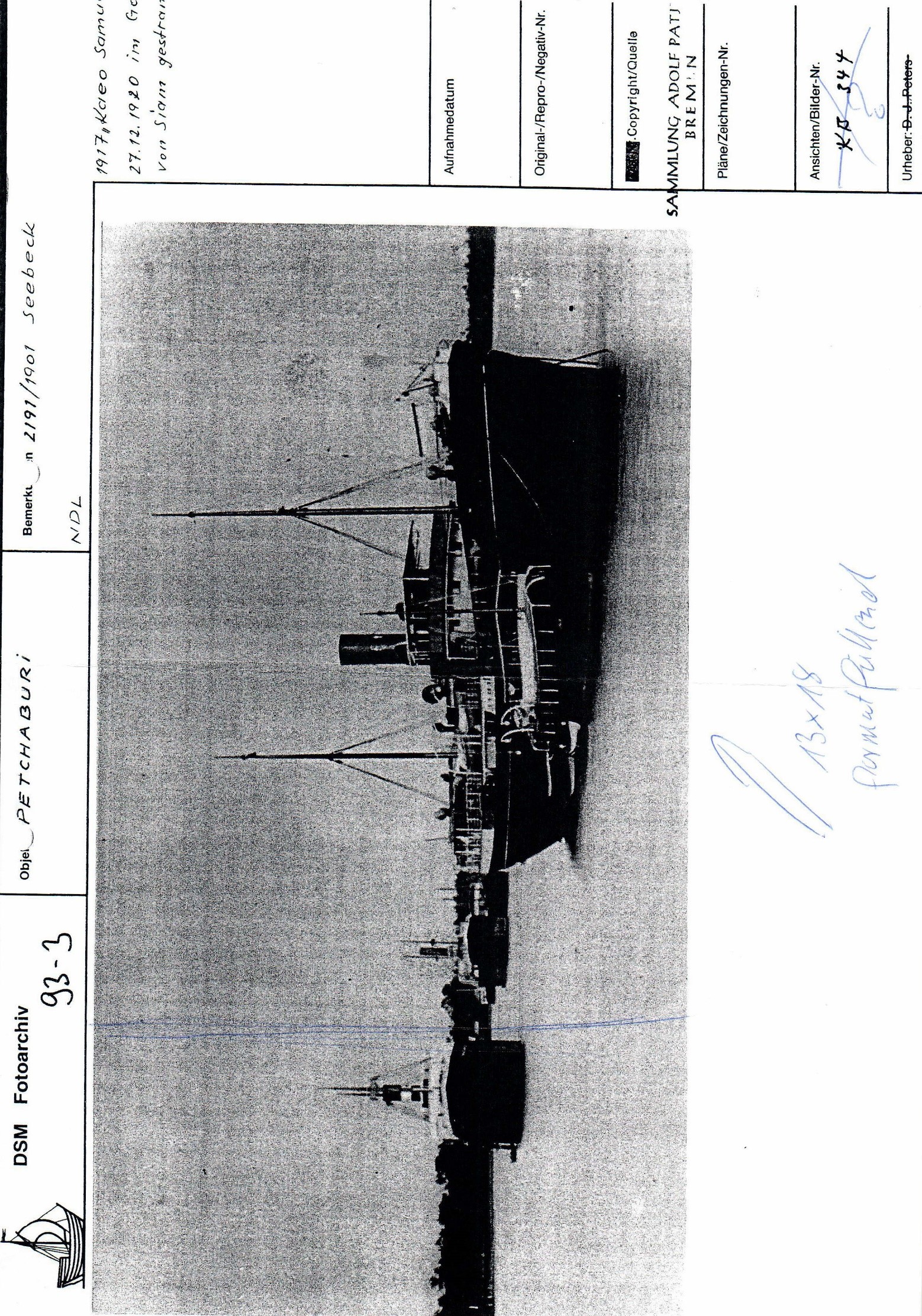

Petchaburi Bremen Ship wreck forward winch. Photo by Charlie Frost at Pattaya Dive Center, Feb 2012
Steamship: PETCHABURI
Specifications and Historical Records
- Built at:- Georg Seebeck AG shipyard, Bremerhaven, Germany. Yard Number:- 173
- Tonnage : 2191 gross tonnage Length : 88,5 m Breadth : 11,9 m Draught :7,3m
- Engine : 3-times expansion-steam engine Power : 1150 Hp, Speed : 12,5 nm/h, Crew : 34
- 24.09.l901 : Launching under the name PETCHABURI for the company North German Lloyd in Bremen.
- 28.10.1901 : Delivery to the North German Lloyd
- August 1914 : At the beginning of World War I the PETCHABURI was interned in Bangkok.
- 27.07.1917 : Confiscated by the Thais.
- New name: KAEO SAMUD
27.12.1920 : On a voyage from Bangkok to Swatow with rice on board she ran ashore near Koh Sichang (actually Koh Khraam. Ed) in the Gulf of Siam and sank.
Local Details of Sinking
The vessel sank after hitting an uncharted reef.
Wreck Dive details:
This wreck is partially broken up and lies on the sandy bottom at 24m, in an area of very strong currents. The wreck should only be dived at ‘Slack Water’ and subject to plenty of Thai Naval activity. 3 Large eagle rays patrol the dive site and are often seen resting on the sands. Bow and stern sections of this wreck are now separated by a large sand dune. Sometimes, attempts to dive this wreck have lead to dive boats being ‘ushered off’ by Thai patrol boats, or the un-buoyed wreck just not being found. Avoid this wreck on spring tides or on days with many Thai Naval vessels patrolling.
GPS Location
Current GPS WGS84 Position in Chong Khram Channel at E100’48.852″ N12’40.092″
Revised GPS Position February 2012
E 100*49’01.9″, N 12*39’58.4″
From Charlie Frost Telephone (+66) 0871426915
Last dived by Charlie Frost from ‘Sirens of the Deep’ dive boat run by Pattaya Dive center
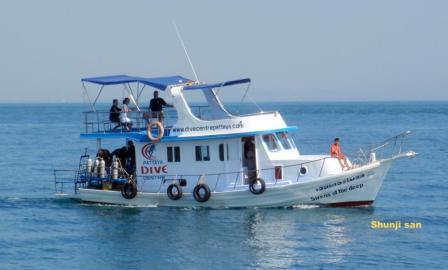
Bremen Pictures, info, GPS and historical research:- Steve Burton March 2005
Other German vessels seized by Thailand during WWI
- CHIENGMAI (1907) 1815grt -> DOEN SAMUD
- DELI (1900) 1394grt -> DEN SAMUD
- KOHSICHANG (1894) 2043grt -> SRI SAMUD
- LANDRAT SCHEIFF (1906) 1640GRT -> LAEN SAMUD
- PATANI (1907) 1819grt -> THONG SAMUD
- PETCHABURI (1901) 2191grt -> KAEO SAMUD
- PITSANULOK (1901) 2019grt -> PHAN SAMUD
- SAMSEN (1903) 1832grt -> DIN SAMUD
- TRAUTENFELS (1904) 4699grt -> YIAM SAMUD
- BANG PAKONG (1903) 455grt -> HAN THALE -> Thai Navy KUT
- CHANTA BOON (1908) 421grt -> ???? -> private JAI JERNG KHA
- MENAM (1906) 464grt -> THON THALE -> private TUNG ON
- PATRIU (1903) 455grt -> LEU THALE -> Thai Navy PHAI
- TACHEEN (1902) 400grt -> CHEN THALE -> Thai Navy KRAM
